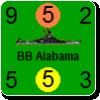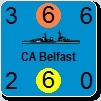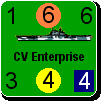rkr1958
Posts: 23483
Joined: 5/21/2009
Status: offline

|
2. Nov/Dec 1939. The Western Front.
Once again the weather in the North Temperate combined with the British on alert in the North Sea conspired to keep the Germans from launch a 1939 Fall Gelb.
Snow in the NT did allow the Germans to invade and conquer Denmark without fear on the first axis impulse, impulse #4. However, with amphibious invasion not possible in snow, the risk of CW intervention even on the last axis impulse, impulse #13, was deemed too large of a risk to take. Let me explain. If the Germans had DOW the Netherlands on their last impulse, then as the allies I would have placed the Dutch corps in the hex with the RP (the hex across the lake and directly east of Amsterdam). While that Dutch corps would have easily been destroyed it would have prevent the Germans from capturing both Rotterdam and Amsterdam on the surprise impulse. With two CW corps on alert in the North Sea, if the turn had continued (30% chance) then the CW could have disembarked a corps to Amsterdam and one to Rotterdam, seriously complicating the German's life. As the German player, that 30% chance was too high of a risk so no invasion.
A follow-on strategy question. Even if the Germans had their airborne corps ready, if the Dutch corps is setup in the hex containing the RP, don't the Germans still need a successful amphibious invasion to ensure that both Amsterdam and Rotterdam are captured on the surprise impulse and ensure that the British are kept out, assuming the Brits have one or more units on alert in the North Sea?
By the way, the CW beefed up the BEF France with a mech corps which is under the CW 7-4 mot corps.

 Attachment (1) Attachment (1)
< Message edited by rkr1958 -- 2/19/2016 3:11:24 AM >
_____________________________
Ronnie
|
 Printable Version
Printable Version


































 New Messages
New Messages No New Messages
No New Messages Hot Topic w/ New Messages
Hot Topic w/ New Messages Hot Topic w/o New Messages
Hot Topic w/o New Messages Locked w/ New Messages
Locked w/ New Messages Locked w/o New Messages
Locked w/o New Messages Post New Thread
Post New Thread